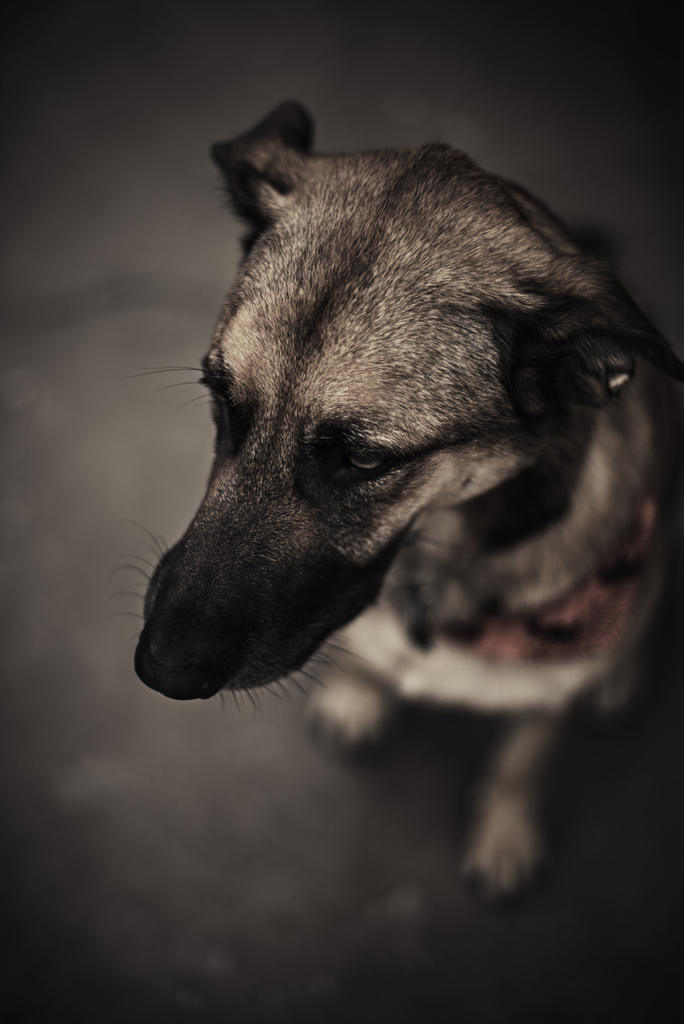

Before I get started here, I’ve got to apologize for not keeping up on writing articles! I have been crazy busy lately. I can’t even begin to chronicle my adventures to you without writing at least three whole blog posts about them, and my life isn’t actually that interesting. It’s mostly just busy. In any case, I’ve begun homeschooling my kids and we’ve finished renovating our house (built circa 1916. I finally have new carpet in my bedroom! Yay!)
Things have still been going well on the medication front for me, which is great, and life is settling down finally. I just finished up training a seizure alert dog, Maggie, for my friend. It was quite enjoyable working with this adorable rescued chow/yellow lab mix and helping her morph from a crazy dog that never listened and was reactive to other dogs to a dog that could go to the dog park, and was a well-behaved and reliable seizure alert dog.
I love force-free dog training. It’s a bit like watching magic work.
Things are picking up here on the blog front, and I recently got an email from a lady regarding her 6 month old German Shepherd puppy that got me thinking about the unique challenges of dog training when you have anxiety, depression or other mental health challenges. Part of being an effective dog trainer is being able to be consistent and upbeat and keep from getting frustrated.
However, when you’ve got mental health stuff piling on you, it can be tough to do dog training happy. Dogs aren’t robots and puppies are pretty much the farthest thing from robots (which is why I prefer to rescue older dogs, honestly… though I love puppies.) Some days you just can’t keep up. Sometimes months go by when you can’t keep up. Dogs are work.
I know how it is when you wake up and you can barely drag your puppy to the potty, much less teach her sit (and then regardless, she pees inside anyway.) Or the days when you’re pretty sure everyone just wants to make you upset at them and though yelling at your dog for barking at the neighbor doesn’t actually make a difference, at least it sort of makes you feel better. Or the times when you’ve been ignoring the dog for several weeks as you drag yourself through a depressive state and you keep thinking “Why bother? I’m so far behind.”
Well, here I am to tell you, I’ve done it too. And it’s ok. I’m a dog trainer with bipolar disorder. I have ignored my dog’s training for weeks at a time because of my illness or because of other things. It happens. It’s ok.
Dogs are smart and they remember things that you teach them a lot longer than you think they do. Most things are fixable. There are very, very few things and dogs that I’ve met that aren’t. So it’s ok if you make a mistake, it’s ok if training doesn’t happen today or tomorrow or for a month or if doesn’t go well. Stop, reset, try again.
And on to how to keep things on the down low for you.
How to Keep Training Frustration Free
Regarding the email, the lady was asking me for some advice as she was getting frustrated because she was having a hard time keeping her pup’s attention during distractions. She mentioned it was slow going.
I have to admit I chuckled to myself a little, recalling the bazillions of puppies I’ve worked with. Distractions are extremely slow going with puppies. Like babies, they have very short attention spans. Any little thing around them will distract them, especially when you have a pup with higher prey drive. In a seemingly empty room, they will find a bug on the floor in the corner to jump on.
Keep Training Sessions Short
5-10 minutes for puppies. You can do several training sessions in a day, but keep it short each time. Remember, they’re like kindergartners. They need to move and play and run and they need a lot of breaks or they get bored. It’s hard, they learn fast so you want to keep going, but you’ll soon learn it’s better to end early.
20 minutes max for older dogs. I have a hard time keeping it short myself, but you will be happier if you do. You might wonder why your local trainer spends so much time talking and only does 20 minutes of actual training exercises, and this is why. It keeps your dog and you happy and engaged.
Keep It Fun
Training shouldn’t be a boring succession of commands. You’re not taking your dog to school to listen to a lecture. Training should be fun for you and your dog. When it stops being fun, then it’s time to stop your training session. Dogs learn faster when it’s fun and you won’t be frustrated either. If you’re not in the right mood to do fun training, take a break and do it again when you are.
End on a Good Note
Always end on a good note. Sometimes you’re trying to train your pup to do something and he is only getting it 1/10 of the time, no matter how you’re trying to break it up. This can be extremely frustrating. Next time, when that 1 in 10 get it right chance happens, reward handsomely and happily and be done with it for that training session.
Your dog will remember the enthusiasm and the reward and you will be far less frustrated.
This technique has helped me train dogs to do things that they don’t particularly seem to want to carry into the real world.
A dog that I was training to bark to alert in an emergency would bark to a doorbell cue from me, but wouldn’t transfer it to the voice cue “Alert”. Every once in a blue moon we could get her to bark when we’d say “Alert” instead of ringing the doorbell, but then she’d never do it again despite our praise. So I finally decided to end the session as soon as she barked for the voice cue (I would also reward her handsomely.) After two more sessions, she was doing it on voice cue reliably!
Work in Steps/Set up For Success
Make training easy for yourself. There’s a saying something like “Going a yard can be hard, but it’s a cinch to go an inch.” Break training into tiny steps so you’re not looking at your wiggly cattle-dog puppy wondering how you’re ever going to get him to down stay for 20 minutes and then just throwing up your arms when he can’t hold still.
When you go by small pieces, it’s easy to see when you need to slow down or go back. As soon as your pup is having a hard time doing something, back up a step for a bit and make it easy again. Your dog should be winning when he’s training. That’s how he learns. So set him up to win (and then quit when he wins so everyone feels happy at the end of a session.)
For example, start by luring the bum to touching the ground and reward. Add a cue. Add a release word. Add 1 second onto bum touching ground before releasing. Practice 1 second sits for a while. End the session on a good note.
Come back later, start with 1 second sits and move on to 2 second sits. Or start with taking a super quick step back and then forward again. Remember to only increase one thing at a time: Distance OR Duration OR Distraction. After your pup can sit for 5 minutes reliably, THEN you can start building distance. Or vice versa.
I work with a grid system, writing each step I want to pass through down in excel (well, I prefer Google Sheets) and marking it off as I pass it. Since each dog I train has different tasks they need to learn, this is a good way for me to think each thing through before I train it.
Click here if you’d like to see one of my training steps lists.
Avoid Pushing
A big part of avoiding frustration is not expecting too much out of yourself and your dog. Just remember to take it slow, you will not regret taking it slow especially (can I emphasize this more?) especially with a service dog. You do not want to push your service dog prospect to the point of uselessness. Be patient, be okay with the slowness, be willing to take breaks when needed for you or your pup. It’s OK. You will be much happier with the results.
You Can Do It!
I can do it! So can you! Keep working on training, even though progress can seem frustrating, slow and steady wins the race. Especially when training a service dog.
